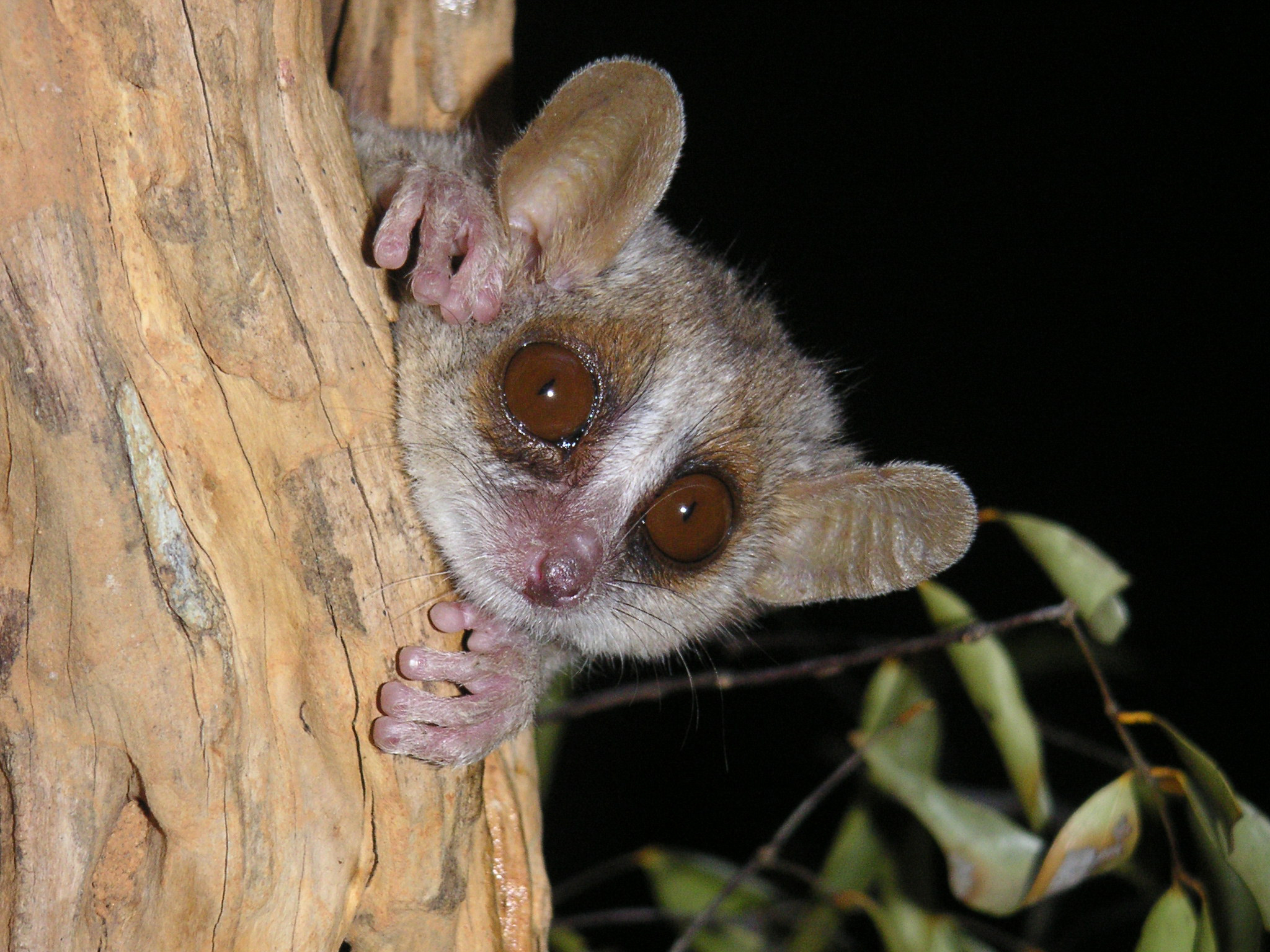Please note: Osher Rainforest will be closed for maintenance Jan. 14–16.
Science News
Promiscuous Lemurs
October 6, 2011

Polyandry was in the headlines this week, and we’re not talking about the tabloids, but rather the science headlines. (Come on, we run a classy joint around here!)
Earlier this week, a paper subtitled, “Costly sex under female control in a promiscuous primate” caught our eye. While the subtitle was enticing, the image with the news story in ScienceNOW was even more so—a big-eyed, adorable mouse lemur. Who could resist?
Turns out that gray mouse lemur (Microcebus murinus) females mate with several males. Polyandry is not uncommon in the animal kingdom, but the classical socio-ecological model in biology assumes that males are the promiscuous ones. They want to mate with as many females as possible in order to pass on their genes to the next generation through a large number of offspring. Females, on the other hand, are more discriminating; they look for the best father for their offspring.
One assumption is that these polyandrous females are promiscuous in order to avoid sexual harassment from the males. To investigate this theory, a team of German researchers manipulated the size of gray mouse lemur females by an increase or reduction of the food supply in such a way that in one experimental group, the females were larger than males and in the other, smaller.
The scientists expected that the larger females would mate with fewer males, because they would be better able to defend themselves against undesired overtures. But things turned out very differently: the large females had considerably more sexual partners than the little ones!
“The lemur females actively look for changing sexual partners, so this must be advantageous for them,“ said lead author Elise Huchard from the German Primate Center. ScienceNOW suggests that there could also be other reasons:
Either a polygamous lifestyle confers some unknown evolutionary advantage for females… or girls really do just want to have fun.